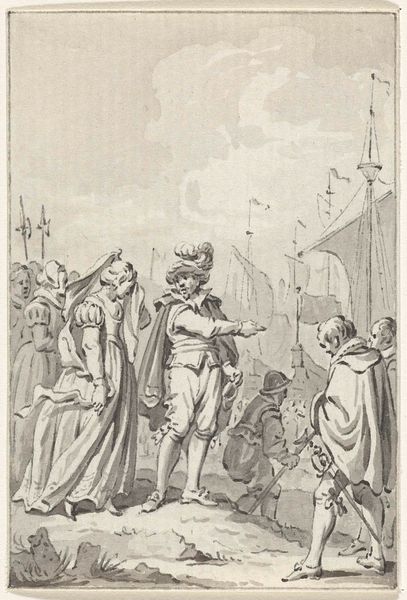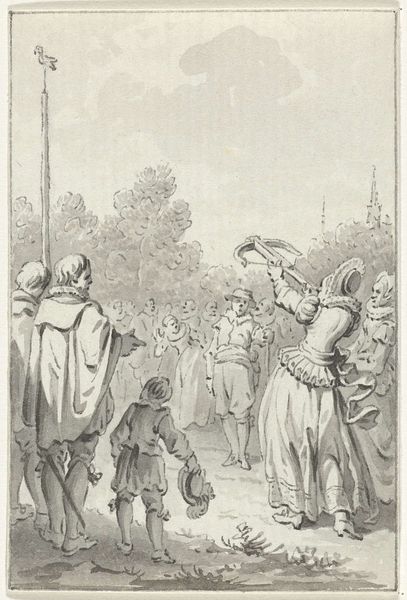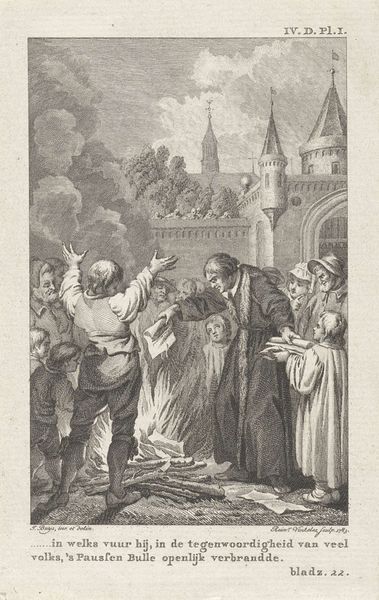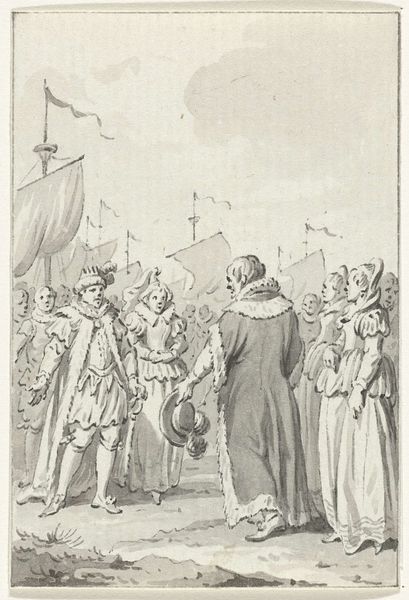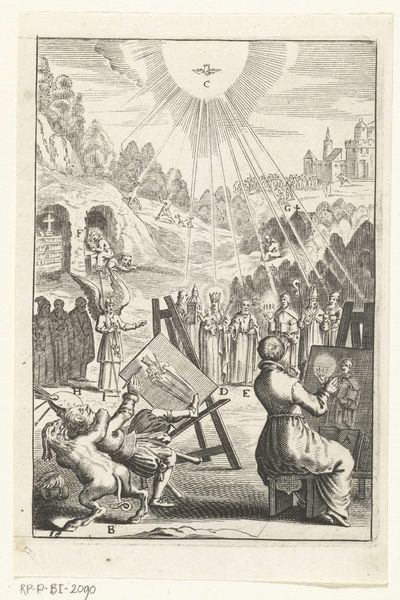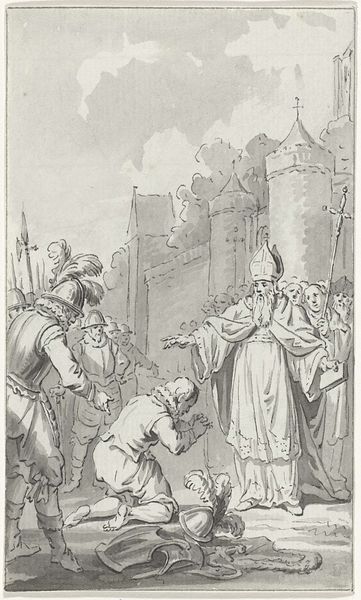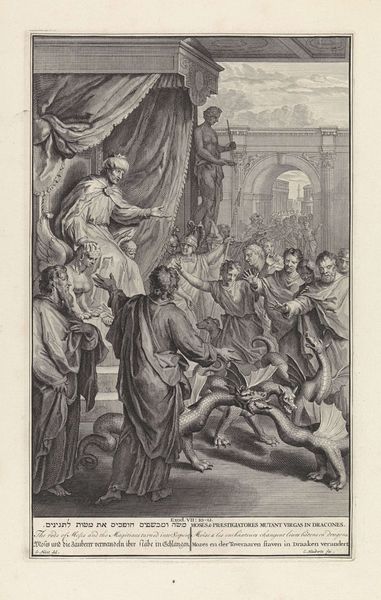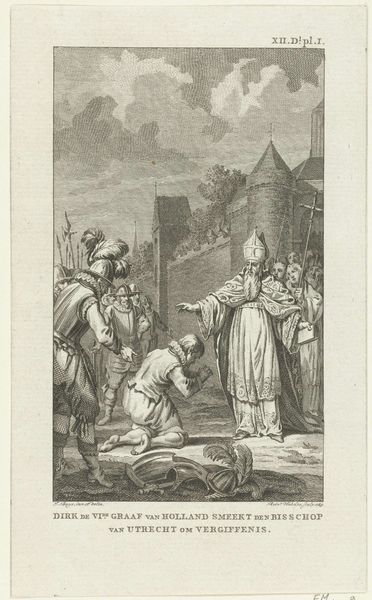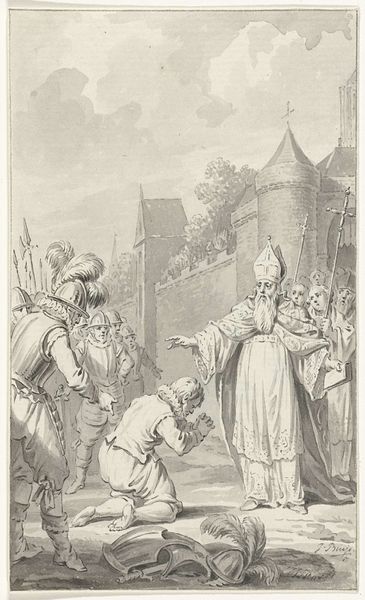
Willem, hertog van Gulik en Kleef, onderwerpt zich aan Karel V en staat Zutphen en Gelre aan hem af, 1543 1794 - 1796
0:00
0:00
jacobusbuys
Rijksmuseum
drawing, ink
#
drawing
#
medieval
#
figuration
#
ink
#
history-painting
#
academic-art
#
realism
Dimensions: height 158 mm, width 102 mm
Copyright: Rijks Museum: Open Domain
Curator: It feels austere. The figures are stark, their expressions caught in a moment of subdued drama. Editor: This drawing by Jacobus Buys depicts a significant historical event: Willem, Duke of Gulik and Cleves, submitting to Charles V and ceding Zutphen and Gelre to him in 1543. Created between 1794 and 1796, it captures a scene of medieval political maneuverings. Curator: Submission is a powerful theme here. Look at the posture, the kneeling figure with head bowed, and the way the light seems to isolate him. But the victor’s stance is not triumphant—it’s more a heavy sense of obligation. The symbols of power seem to weigh on him too. Editor: It is intriguing to think about why Buys, in the late 18th century, would choose to depict this particular historical moment. The late Dutch Republic was itself in a period of political turmoil, perhaps looking to the past for reflections of its own predicaments with authority. Curator: Yes, that act of cession has an unmistakable symbolic weight. The offered sword represents the transition of power. I’m also drawn to the detail of what appears to be a heraldic tapestry backdrop, maybe connoting something about the transfer of lineage or cultural history alongside the physical land. Editor: And behind the two central figures, a congregation, or assembly, watches silently. Who are they in this depiction? We can assume, from a historical point of view, this drawing served a propagandistic, didactic function at the time of its creation. The clothing identifies a historical era to a contemporary audience, shaping their understanding of power. Curator: Even the landscape seems to participate. The sketched tree form almost creates a metaphorical structure under which the figures interact. Its presence anchors the composition, as if it silently witnessed the shifts in power. Editor: Ultimately, what we see here, in ink on paper, are not simply representations of individual figures. Buys encapsulates a network of political meaning, one which carries resonances from the medieval era up to the era of the drawing’s creation. Curator: This artwork certainly makes you reflect on how surrender and submission themselves are represented, and how symbols of power work psychologically on the figures portrayed here. Editor: A quiet meditation on the burden and performance of authority.
Comments
No comments
Be the first to comment and join the conversation on the ultimate creative platform.
